Contents
History Of Underwater Welding
Underwater welding is a professional technique that has been in use since the early 1950s. It involves specialized welders and highly trained divers to create a weld underwater effectively.
This welding process is often found in the offshore oil industry but applies to other underwater building projects such as bridge and dam repairs or shipbuilding.
The process requires specific techniques and safety protocols for professional welders to complete successful welds.
Though underwater welding has been around for over half a century, technology has dramatically improved since its implementation, allowing projects to be done more efficiently and precisely.
Overall, professional underwater welding is an essential trade tool that continues to increase in demand due to technological advancements.
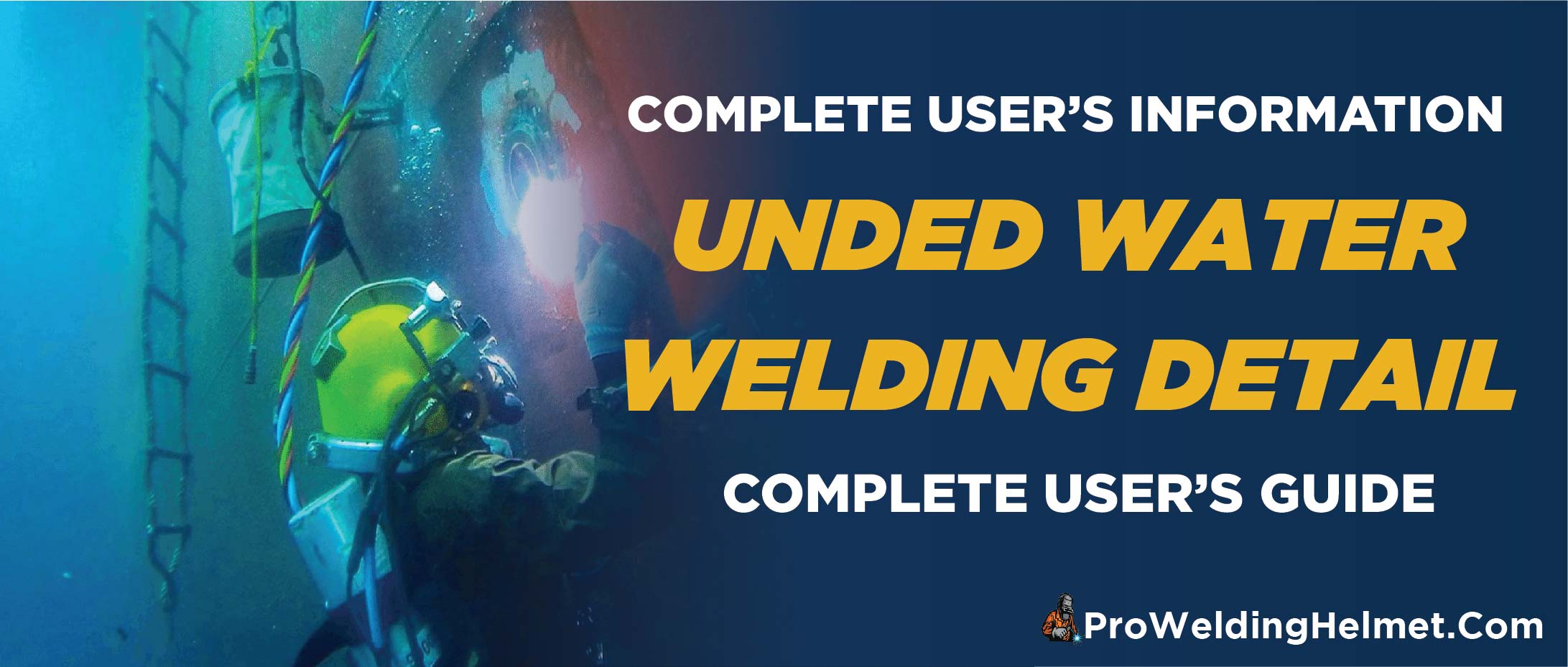
What Is Underwater Welding
Underwater welding is a specialized form of welding that is done underwater. It is performed by highly trained divers who are certified to weld underwater.
This process involves using special equipment and techniques to create a weld in an environment where standard welding is impossible due to oxygen deprivation and water pressure.
The process requires special torches, electrodes, filler metals, and specific safety protocols to ensure a successful weld.
Underwater welding has been used for many years in the offshore oil industry but has also been increasingly used for bridge repairs, shipbuilding, and dam maintenance.
With technological advancements, this profession continues to increase in demand every year.
How Does Underwater Welding Work
Underwater welding is a complex and dangerous process that requires particular safety protocols and techniques. The welders must be adequately trained to understand the aquatic risks, such as decompression sickness and nitrogen narcosis.
The welders must also use specialized equipment and torches to withstand water pressure and oxygen deprivation.
The arc welding process is often used for underwater welding, although other forms of welding, such as gas metal arc welding (GMAW) or flux-cored arc welding (FCAW), may also be utilized.
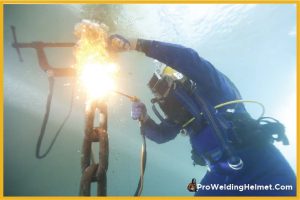
Once the welder has set up their tools and safety protocols, they will begin making a weld underwater.
This involves using filler metals with low vapour pressure to reduce the risk of fire or explosions and ensuring the weld is deep enough to create a secure joint.
The welder must also consider the movement of currents and marine life when working underwater and ensure that their workspace is adequately lit so they can safely and accurately complete the weld.
Once finished, the welders will inspect the welds for any errors before calling it a successful job.
Types Of Underwater Welding
Dry Welding
Dry is the most commonly used type of underwater welding. This process involves welding in a chamber filled with water, allowing no air to be present.
The welder will use specialized torches and electrodes to create the weld while using low vapour-pressure filler metals to prevent sparks and explosions.
Wet Welding
wet welding is another underwater welding often used for offshore oil platforms or other large construction projects. In this process, the welders will be submerged in water with their equipment and make the weld while supplying a continuous supply of oxygen from an external source.
This method allows for greater precision due to increased visibility and more significant welds than dry welding due to better heat control.
Hyperbaric Welding
Hyperbaric welding is a form of underwater welding commonly used to repair ships and offshore oil platforms.
This process involves welding at a depth greater than 10 meters (30 feet) with much higher atmospheric pressure.
The welders must use specially designed tools and machines to withstand the increased water pressure and correctly complete the weld in such an environment.
Robotic Underwater Welding
Robotic Underwater Welding is becoming more popular as technology advances.
This form of underwater welding utilizes robots programmed to perform specific tasks with high precision while reducing the risk of injury or death due to hazardous conditions.
It also allows for larger, more complex projects to be completed faster and with better accuracy than traditional methods of underwater welding.
Underwater Welding Training
Underwater welding requires specialized training and certifications to become a certified underwater welder.
The welder must practice safety protocols and understand the risks associated with underwater welding before attempting to weld.
They must also be trained to use specialized equipment, such as torches, electrodes, and filler metals designed for use in an underwater environment.
After completing their initial training, welders should continue to hone their skills by practising mock-ups or joining accredited workshops or classes.
Underwater welders must also know dive gear and operations, air pressure systems, decompression sickness prevention techniques,
vessel inspection procedures, PPE regulations, gas detection devices and safety measures related to confined space entry.
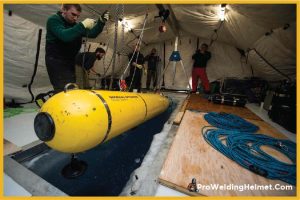
To become certified, underwater welders must pass a written test and demonstrate their skill and knowledge in practical scenarios.
The certification will allow them to be employed as professional underwater welders and can open up opportunities for them in the maritime industry.
Underwater welding is a highly skilled job that requires specialized training and certifications.
With proper training, welders can become certified professionals experienced in working with technical equipment while adhering to safety protocols and regulations.
By mastering this skill, they can open up many opportunities for themselves in the maritime industry.
Equipment Used In Underwater Welding
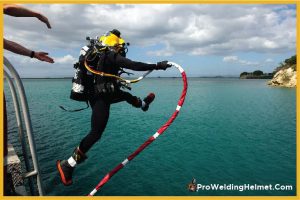
Underwater welders use various specialized tools and equipment to complete their work. These include
- Torches
- Electrodes
- Filler metals
- Specialized underwater cutting equipment
Welders must be trained to properly use these tools before attempting any underwater welding.
Other safety gear such as personal protective equipment (PPE), air pressure systems, decompression sickness prevention techniques,
vessel inspection procedures, gas detection devices and confined space entry measures should also be used by professional underwater welders to ensure a safe working environment.
Safety Precautions When Underwater Welding
Underwater welding is a dangerous job that requires welders to use extreme caution and adhere to all safety protocols.
They must always be aware of their surroundings, as any small mistake can result in severe injury or death.
Underwater welders must wear proper personal protective equipment (PPE) such as wetsuits, helmets, gloves, booties and goggles while performing the job.
It is also essential that they are correctly trained in the use of torches and electrodes so that they can complete their work with precision.
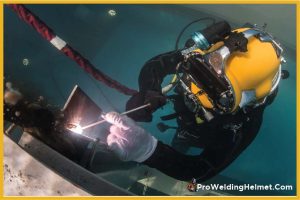
They should also be familiar with dive gear operations, air pressure systems, decompression sickness prevention techniques,
vessel inspection procedures, gas detection devices and confined space entry measures before attempting underwater welding.
Underwater welders should also pay close attention to the conditions of their work site, such as water temperature and visibility, before beginning a welding job.
This is essential to ensure that the welding process goes smoothly and safely.
By following these safety guidelines, underwater welders can minimize potential risks and maximize the quality of their work.
With proper training and certification, they can be successful professionals in the maritime industry.
What Are The Applications Of Underwater Welding
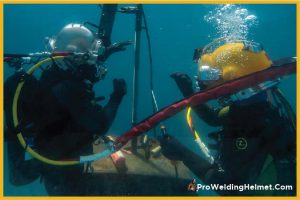
Underwater welding is used in a variety of industries, including military, marine engineering and offshore oil rigs. Some typical applications include:
- Repairing metal structures such as hulls, decks, piers and pipelines
- Welding new components to existing structures
- Joining metal parts together for ships or boats
- Installing utilities such as plumbing and electrical systems
Underwater welding can also be used to build custom projects, like underwater sculptures and art installations.
Advantages Of Underwater Welding
- It is a fast and efficient process. Underwater welding can be completed in less time than traditional welding, making it an ideal choice for time-critical projects.
- It has superior strength and durability compared to standard welding techniques. This makes it more suitable for repairing heavily damaged structures or joining thicker materials such as steel plates.
- The welds are usually cleaner and free of contaminants, resulting in better-looking results.
- It is safe when done correctly, as there is no risk of fire or explosions due to the lack of oxygen in the water.
- Welders have greater flexibility when working underwater, allowing them to access hard-to-reach areas that would otherwise be inaccessible with traditional welding techniques.
- It is less expensive than other welding forms, making it an attractive option for projects with limited budgets.
- The welds produced by underwater welding are more corrosion-resistant, which makes them ideal for use in harsh environments such as oceans and seas.
Disadvantages Of Underwater Welding
- It isn’t easy to perform and requires special training, so welders must be well-versed in this technique before attempting it.
- Welds created underwater can experience greater levels of thermal stress due to the pressure from the surrounding water. This can lead to cracking or other defects if not done correctly.
- It is more expensive than traditional welding as additional costs are associated with dive gear and safety equipment.
- The visibility underwater can be limited, making it easier for welders to complete their jobs with proper lighting equipment accurately.
- There is an increased risk of decompression sickness when working at depths greater than 30 meters (98 feet). This further complicates the process and adds additional risks to the job.
- Welders must be prepared to work in extreme temperatures and weather conditions, making it a physically demanding task.
- The materials used for underwater welding may pose health risks, and precautions should be taken when working with them.
Final Takeaway
Underwater welding is a unique and specialized skill that requires specialized training and certification. Welders must have the right equipment and take proper safety precautions to ensure their job is done safely and effectively.
With the appropriate expertise, welders can benefit from the efficiency, strength and durability of underwater welding for many projects in diverse industries such as military, marine engineering, offshore oil rigs and custom sculpture works.